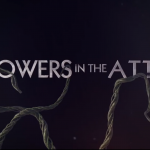Every Monday in Books Besides the Bible, Ethan Bartlett considers the value and pleasure of reading for Christians.
Warning: Spoilers of all three books ahead.
To state the obvious, Katniss is not Christ, and The Hunger Games are not a Christian allegory in the manner of a series like Narnia. However, as I read The Hunger Games trilogy, I found it increasingly hard to ignore the number of Christ-symbols that appear throughout. I could do several thousand words on this, but for the sake of brevity I want to focus on three aspects that recur throughout the trilogy.
Acts of Communion
A literary “act of communion” need not carry the full symbolic weight of the Last Supper, though it can; an act of communion is merely some sort of sharing that binds two or more characters in a way which goes beyond the scene immediately at hand. There are several scenes that center around Katniss performing such an act; indeed, for all her flaws, acts of communion are one thing at which Katniss excels.
One occurs about a third of the way through Catching Fire. Katniss has discovered a pair of rebels in the woods, and she feeds them a meal of bread and tea. Besides this act in and of itself, it is interesting to note the object that made Katniss trust the runaways in the first place: “a small white circle of flat bread. More of a cracker, really.” The way this “cracker” is described makes it sound awfully similar to the wafers used for Communion in certain church bodies—Lutheran, Roman Catholic, and Episcopalian being the ones I know of.
Communion wafers usually have a cross stamped into the middle of them. What is stamped in the “cracker” in Catching Fire? One of the symbols of Katniss: the Mockingjay.
Girl on Fire/Mockingjay
The two symbols for Katniss, of course, are her identity as the “girl on fire,” and the image of the mockingjay. Leaving aside the fact that the mockingjay in itself is a purification of an evil thing, a resurrection of a species that was supposed to simply die out, the image we get when we combine the “girl on fire” with the mockingjay is that of the phoenix.
A bird out of ancient mythology, the Phoenix was said to die by burning itself up, then to rise again from its own ashes. The story predates Christ, but for obvious reasons the early church picked up the phoenix as a symbol for Christ.
There is a point at which Collins lays this one in the reader’s lap: about halfway through Catching Fire, when Katniss is on-stage in her wedding dress (note, a white wedding dress, symbolic of purity), the top layer of the dress appears to burn away, revealing a mockingjay beneath. It is at this point, for me, that it becomes harder to believe that Collins did not intend this symbol than that she did.
Death and Resurrection
Like a good Lutheran, I must ask the question: what does this mean? Why all this symbolism?
The Hunger Games is, among many other things, a story about death and resurrection. Both of the main characters (Katniss and Peeta) and several of the minor characters experience symbolic—though sometimes near-literal—deaths and resurrections.
Even the ending—which, contrary to some commentators, I would characterize as “cautiously hopeful”—shows Katniss slowly coming back to life. One of the last images we are left with is that of Peeta planting a rose bush. Katniss, at first, reacts to this badly, for the rose (note, an artificially modified, genetically engineered rose) has become a symbol of President Snow, and of all of the things that are horrible and threatening to Katniss. However, we find out that this is a Primrose bush, planted in memory of Katniss’ younger sister, Prim. The symbolic implications of this single act are staggering: it is a symbolic resurrection, in different ways, for both Prim and Katniss, and it redeems the rose from the corruption imposed on it by President Snow. And the rose, of course, is another ancient symbol for Christ.











